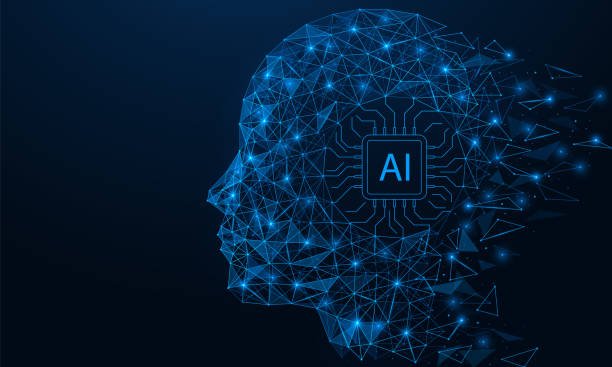5G AI Optimizes Network Performance and Wireless Capabilities.
In the same way that other technologies are being upgraded by AI, 5G technology is also being upgraded. The integration of AI into the operations of 5G wireless networks and devices makes it possible to have wireless communications that are both smooth and efficient, and it also enables the creation of new and amazing experiences.
Several difficulties that arise throughout the process of putting wireless technology into practice may be readily overcome by making use of this potent instrument.
Because of the incorporation of AI into 5G technology, we may anticipate a far more dependable and robust network than we have ever seen before.
The purpose of artificial intelligence in 5G is to manage the network traffic of 5G wireless networks, as well as to detect abnormalities and identify anomalous spectrum utilization.
5G is essential for enhancing radio awareness and enabling new enhancements such as improved system performance, increased device experience, and improved network security. In this post, we will explore how AI is helping to improve the performance of 5G networks.
What exactly is 5G?
Fifth-generation cellular technology, often known as 5G, is anticipated to significantly alter the ways in which people work and live. It is the fifth generation of mobile networks, and the first time its specifications were defined was around the end of 2017.
It is anticipated that 5G would provide much quicker connection speeds than its predecessors, 2G, 3G, and 4G.
The 5G network is more reliable than its predecessor, the 4G LTE network, boasting faster reaction times, more power, and the capacity to support a bigger number of connected devices.
There are three fundamental categories of 5G service: low-band, mid-band, and high-band. At the moment, none of them are compatible with one another, and they each behave differently. The rollout of wireless capabilities for 5G networks started in the United States in 2010 and throughout the globe in 2018.
Although these capabilities are still in their infancy, industry professionals believe they have enormous promise. Ericsson, a renowned producer of information and communication technology, estimates that by the year 2024, forty percent of the world’s population will be linked to 5G networks for service providers (ICT).
What exactly is 5G?
How does the rollout of 5G affect the progress made in AI?
One method in which the industry is tackling the various complications involved in the adoption of 5G networks is via the incorporation of artificial intelligence into the network infrastructure.
When it comes to incorporating AI into 5G, the primary goals are to cut down on capital expenditures, improve network performance, and create new revenue sources.
When Ericsson polled the decision-makers at 132 cellular firms across the globe, more than half of them stated they anticipated incorporating AI into their 5G networks by the end of the year 2020.
Experts have said that 5G is already being utilized to enhance customer service and experience by increasing network quality and providing tailored services. This was expressed by 55% of the experts polled. According to the statistics, the advantages of AI in 5G go beyond the control of costs and the efficiency of network administration.
One key addition to these benefits is the improvement of the user experience. It is no longer a distant vision, but rather a rapidly becoming reality, that applications of AI in 5G would be used to expedite and tailor service delivery.
Service providers all across the globe are planning, conducting testing, and operating 5G networks in order to advance the technology.
However, the unstable and intricate nature of this intriguing 5G circle has, on occasion, proven to be a barrier to the acquisition of meaningful and trustworthy data.
Which fields will see the most change as a result of 5G?
5G in manufacturing & industry
The incorporation of AI into 5G networks would not only make industrial production processes easier going and more efficient but will also increase safety while simultaneously reducing the expenses of maintenance.
Office automation is one possibility in business; but, 5G and AI will also boost industry and manufacturing in the near future. It can assist in the maintenance of equipment, monitor machinery, and detect possible faults in advance, it will also give the intriguing option of remote control of gear.
The use of 5G and AI in medical care
There are a number of possibilities that may be taken advantage of in the medical field thanks to AI and 5G, but one of the most alluring is connected to the remote monitoring of patients when they are away from the hospital.
The application of 5G technology in remote monitoring devices will increase the overall quality of healthcare results.
5G will increase efficiency and revenue in the healthcare business by assisting in the creation of quicker, more efficient networks that can keep up with the massive volumes of data involved.
The use of 5G in various transportation systems
Now, AI and 5G will work in tandem to transform the connectivity of transport, which will include autonomous vehicles, buses, and transport infrastructure such as securing traffic lights to support optimal traffic flow.
This transformation will take place in parallel with other aspects of the transport industry.
According to the findings of the survey, 5G would enable transportation systems such as public bus networks as well as private logistic fleets to achieve higher levels of visibility and control.
5G will make it possible to increase communications between vehicles, which will make it possible to test more autonomous vehicles. The wireless capabilities of 5G networks will also assist cities in gaining access to more data on their own transportation systems.
The role of 5G and AI in B2B
There are many business-to-business apps, but the support for 5G, which will enable remote working, is one of the most important components. There are also many business-to-consumer applications.
Take for instance the way AI powers Grammarly’s assistance for text-based communication, which is provided by Grammarly.
But as technology for virtual and augmented reality evolves, it is not difficult to imagine how 5G and AI will revolutionize and enhance not just work done remotely but also work done on mobile devices.
5G in AR/VR
The paper states that dependable 5G networks are necessary for the further development of AR and VR. Since these technologies demand large quantities of data processing, which may be given by 5G, they need a network that is less costly, more comprehensive and has lower latency in order to continue evolving and attain widespread acceptance.
It is vital for both now and in the future that 5G be defined in simple terms in order to provide quicker and far better performance from virtual reality and augmented reality apps.
With 5G, it will be feasible to boost capacity for better and more advanced mobile broadband by increasing network speeds. This will be possible.
5G in agriculture
The agriculture sector will be impacted by the introduction of 5G. According to the findings of the survey, farmers all over the globe are using IoT technology in order to improve agricultural operations such as water management, fertigation, protecting animals, and crop monitoring.
5G might allow real-time data collection. It will make it possible for farmers to survey, monitor, and automate agricultural systems, which will increase farmers’ profitability as well as their efficiency and safety.
5G for the power and utility industries
5G will also have an effect on vital aspects of infrastructure, such as power and utility systems. It is one of the most interesting and highly anticipated fields that is anticipated to profit from 5G services.
In addition to energy generation, transmission, distribution, and usage, 5G technologies might generate more novel solutions for the next wave of smart grid features and efficiency. These technologies could also give advantages to essential infrastructures like hospitals and airports.
Conclusion
In the realm of newly emerging technologies, 5G everywhere is the innovation that is anticipated to bring about a transformation of the complete ecosystem. When 5G is implemented on a single platform, it will lead to fantastic new prospects with a fresh perspective.
The most cutting-edge artificial intelligence (AI) and fifth-generation (5G) wireless networking technology will assist to build an atmosphere in which data-driven algorithms will modify cloud-enabled methods and appliances to provide customers with an engaging experience.
The fifth-generation wireless (5G) standard will have an impact on a variety of sectors, including energy and utilities, businesses, agriculture, healthcare, transportation systems, and many more.
What Industries In The Energy Sector Can Employ AI?






